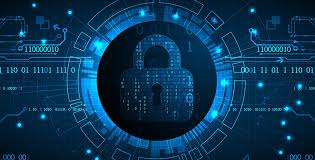Cloud adoption is a cornerstone of modern business with its unmatched potential for scalability, cost efficiency, flexibility, and net-zero targets around sustainability. However, as organizations migrate more workloads, applications, and sensitive data to the cloud it introduces more complex challenges for CISO’s. Let’s dive into the most pressing issues keeping them up at night—and how Darktrace / CLOUD provides a solution for each.
1. Misconfigurations: The Silent Saboteur
Misconfigurations remain the leading cause of cloud-based data breaches. In 2023 alone over 80% of data breaches involved data stored in the cloud.1 Think open storage buckets or overly permissive permissions; seemingly minor errors that are easily missed and can snowball into major disasters. The fallout of breaches can be costly—both financially and reputationally.
How Darktrace / CLOUD Helps:
Darktrace / CLOUD continuously monitors your cloud asset configurations, learning your environment and using these insights to flag potential misconfigurations. New scans are triggered when changes take place, then grouped and prioritised intelligently, giving you an evolving and prioritised view of vulnerabilities, best practice and mitigation strategies.
2. Hybrid Environments: The Migration Maze
Many organizations are migrating to the cloud, but hybrid setups (where workloads span both on-premises and cloud environments) create unique challenges and visibility gaps which significantly increase complexity. More traditional and most cloud native security tooling struggles to provide adequate monitoring for these setups.
How Darktrace / CLOUD Helps:
Provides the ability to monitor runtime activity for both on-premises and cloud workloads within the same user interface. By leveraging the right AI solution across this diverse data set, we understand the behaviour of your on-premises workloads and how they interact with cloud systems, spotting unusual connectivity or data flow activity during and after the migration process.
This unified visibility enables proactive detection of anomalies, ensures seamless monitoring across hybrid environments, and provides actionable insights to mitigate risks during and after the migration process.
3. Securing Productivity Suites: The Last Mile
Cloud productivity suites like Microsoft 365 (M365) are essential for modern businesses and are often the first step for an organization on a journey to Infrastructure as a Service (IaaS) or Platform as a Service (PaaS) use cases. They also represent a prime target for attackers. Consider a scenario where an attacker gains access to an M365 account, and proceeds to; access sensitive emails, downloading files from SharePoint, and impersonating the user to send phishing emails to internal employees and external partners. Without a system to detect these behaviours, the attack may go unnoticed until significant damage is done.
How Darktrace helps:
Darktrace’s Active AI platform integrates with M365 and establishes an understanding of normal business activity, enabling the detection of abnormalities across its suite including Email, SharePoint and Teams. By identifying subtle deviations in behaviour, such as:
• Unusual file accesses
• Anomalous login attempts from unexpected locations or devices.
• Suspicious email forwarding rules created by compromised accounts.
Darktrace’s Autonomous Response can act precisely to block malicious actions, by disabling compromised accounts and containing threats before they escalate. Precise actions also ensure that critical business operations are maintained even when a response is triggered.
4. Agent Fatigue: The Visibility Struggle
To secure cloud environments, visibility is critical. If you don’t know what’s there, how can you secure it? Many solutions require agents to be deployed on every server, workload, and endpoint. But managing and deploying agents across sprawling hybrid environments can be both complex and time-consuming when following change controls, and especially as cloud resources scale dynamically.
How Darktrace / CLOUD Helps:
Darktrace reduces or eliminates the need for widespread agent deployment. Its agentless by default, integrating directly with cloud environments and providing instant visibility without the operational headache. Darktrace ensures coverage with minimal friction. By intelligently graphing the relationships between assets and logically grouping your deployed Cloud resources, you are equipped with real-time visibility to quickly understand and protect your environment.
So why Darktrace / CLOUD?
Darktrace’s Self-Learning AI redefines cloud security by adapting to your unique environment, detecting threats as they emerge, and responding in real-time. From spotting misconfigurations to protecting productivity suites and securing hybrid environments. Darktrace / CLOUD simplifies cloud security challenges without adding operational burdens.
From Chaos to Clarity
Cloud security doesn’t have to be a game of endless whack-a-mole. With Darktrace / CLOUD, CISOs can achieve the visibility, control, and proactive protection they need to navigate today’s complex cloud ecosystems confidently.
[1] https://hbr.org/2024/02/why-data-breaches-spiked-in-2023
































.jpeg)








